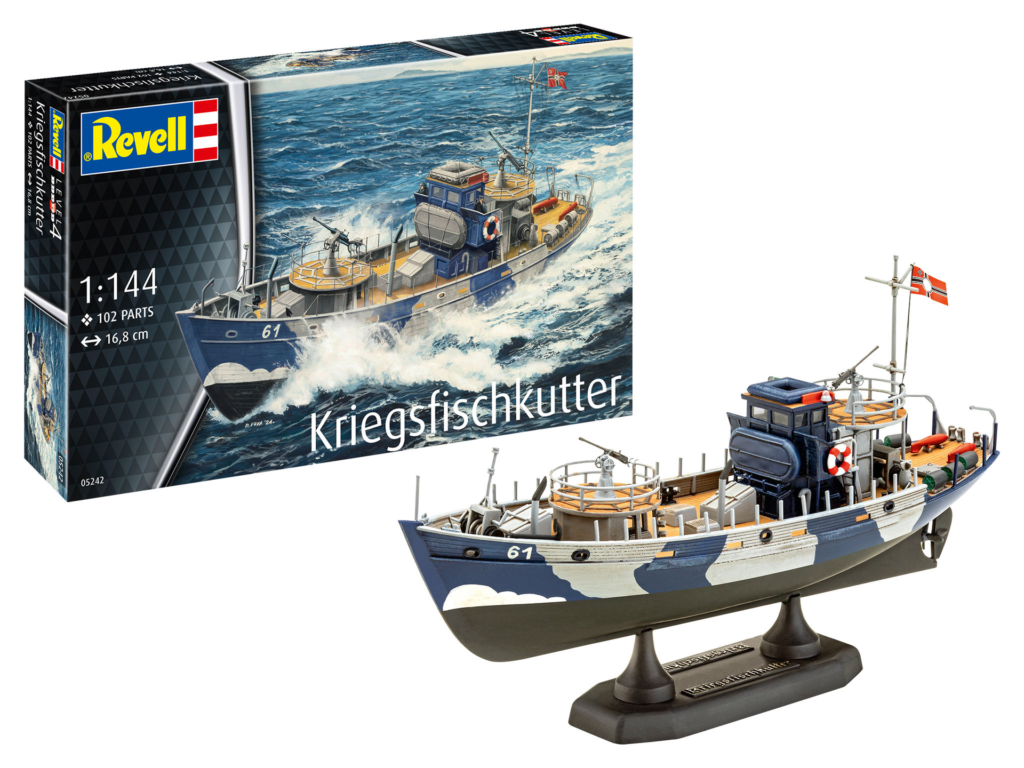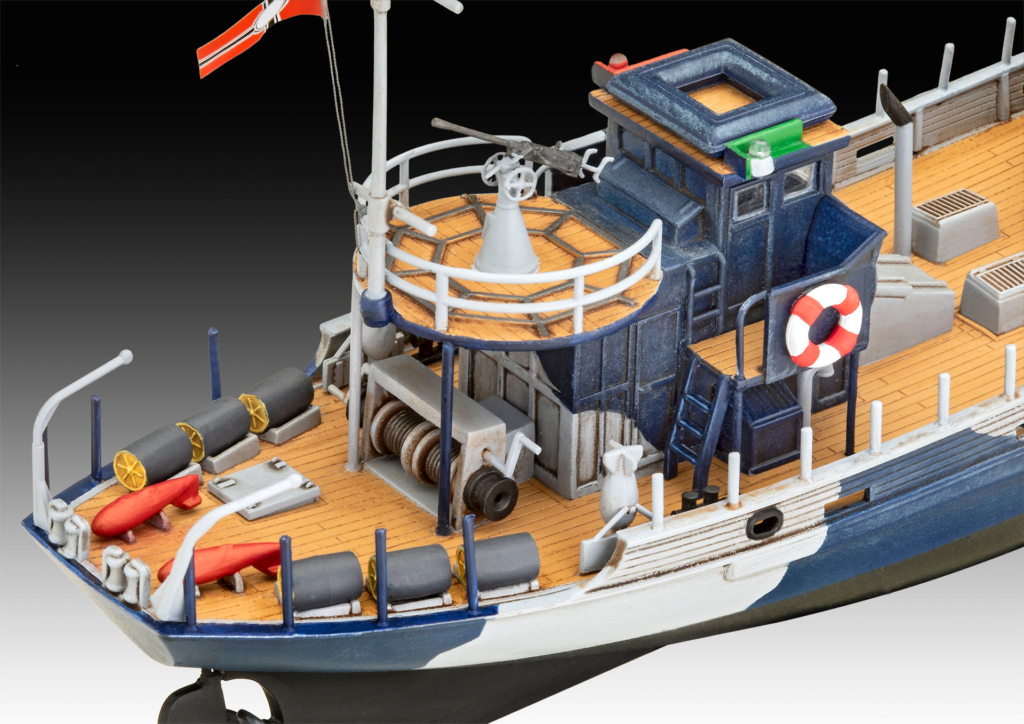In the rough waters of World War II, it wasn’t just the large battleships and submarines that played a decisive role. Often overlooked, but of invaluable worth were the small, robust war fishing cutters – called KFK for short (Revell Shop Link). These inconspicuous vessels formed the backbone of numerous maritime operations and today represent a fascinating chapter of naval history that is of great interest especially to model builders.
The Origin Story of the KFK
The history of the war fishing cutters began as early as the 1920s with the politically controlled “standardization of the vehicles of the German fishing fleet”. The Reich fishing cutter developed at that time was predominantly built from wood and could be ordered inexpensively by private operators. The special feature: in case of war, these vessels had to be returned to the navy – a forward-looking plan that would later pay off.
The actual KFK project was developed in 1941 based on a fishing seiner by Maierform GmbH Bremen. Production began in 1942 and marked the beginning of the largest shipbuilding series in German naval history. The simple and technological construction with wooden hull and diesel engines made the boats particularly cost-efficient and versatile.
What is a Seiner in Fishing?
A seiner or seiner boat is a special watercraft designed for purse seine fishing. These boats use encircling nets or seines for fishing and are available in various sizes – from small open boats to large seagoing vessels.
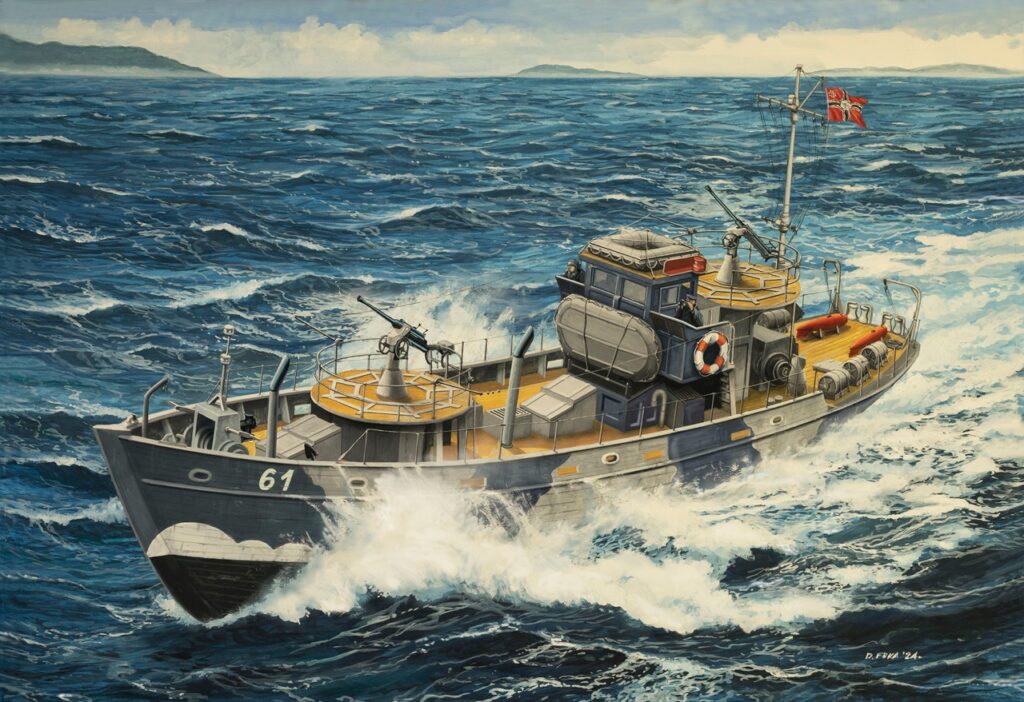
The term “seiner” is derived from the English word “seine,” which means “Fischerräuse” in German. In English, the term “seiner” or “seiner boat” is also used, while in French it’s called “senneur”.
Impressive Production Numbers
The dimensions of KFK production are truly impressive. A total of 1,072 units were ordered, of which 612 were actually completed. The boats were built in no fewer than 42 shipyards in seven European countries. This international production included:
- 411 cutters at the Ernst Burmester Schiffswerft KG in Swinemünde-Ost
- 44 cutters in 17 Swedish shipyards
- 29 cutters in 12 Dutch shipyards
- 27 cutters in Varna (Bulgaria)
- 22 cutters in six Belgian shipyards
- 12 cutters in Greece
- 12 cutters in Kherson (Ukraine)
- 3 cutters in Constanţa (Romania)
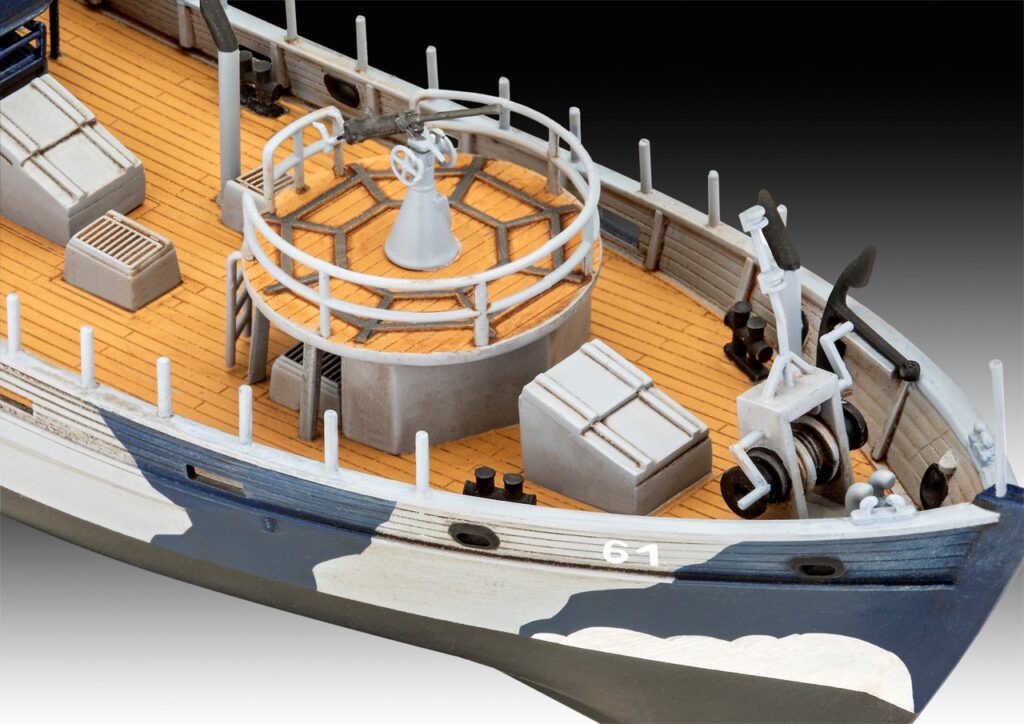
The Swedish shipyards unknowingly built warships for the German navy! These orders were disguised as orders for “normal” trawlers and were placed by the then Reich Ministry of Food. The cutters with the numbers KFK 93 to KFK 137 were delivered complete with fishing equipment and only later converted to war configuration in German Baltic Sea shipyards – a remarkable example of the covert operations of wartime.
Versatile Applications
The KFKs were true multi-talents at sea. With a length of 24 meters, a width of 6.4 meters, and a maximum speed of 9-10 knots, they weren’t particularly fast, but extremely versatile. Depending on the armament, they could be used in various roles:
- As a patrol or escort boat
- Minesweeper to combat sea mines
- Training boat
- and even as support in submarine hunting
The standard armament consisted of one 3.7-cm flak, two 2-cm flaks, and depth charges. In some cases, the forward 3.7-cm cannon was exchanged for a quadruple 2-cm flak, which underlines the flexibility of these vessels.
The KFKs were deployed in many important theaters of war where the German Navy was involved – in the North Sea, in the Atlantic, in the Mediterranean, and in the Black Sea. They served in coastal security service, in submarine hunting flotillas, and of course before and after the war for fishing. Of the 554 KFKs sent to the front, at least 135 sank – a testimony to the dangerous missions these small ships carried out.
Post-War Period and Legacy
After the end of World War II, many of the surviving KFKs were converted back to fishing vessels and coastal transporters, while others were taken over by the navies in liberated Europe. For example, the Norwegian coastal artillery used some KFKs as transport ships for a long time. The remaining units were used to clear sea routes and later divided between the USSR, the USA, and Great Britain.
The KFKs are a fascinating example of how civilian technology can be quickly adapted for military purposes. Their robustness, versatility, and the impressive production performance under the most difficult war conditions make them a remarkable chapter in naval history.
A Model for Enthusiasts
For model building enthusiasts, the new KFK kit from Revell offers an excellent opportunity to recreate a piece of this fascinating history. Made in 1:144 scale, the model consists of 102 precisely crafted parts and, with its dimensions of 168 mm length, 46 mm height, and 40 mm width, presents a challenging but rewarding challenge.
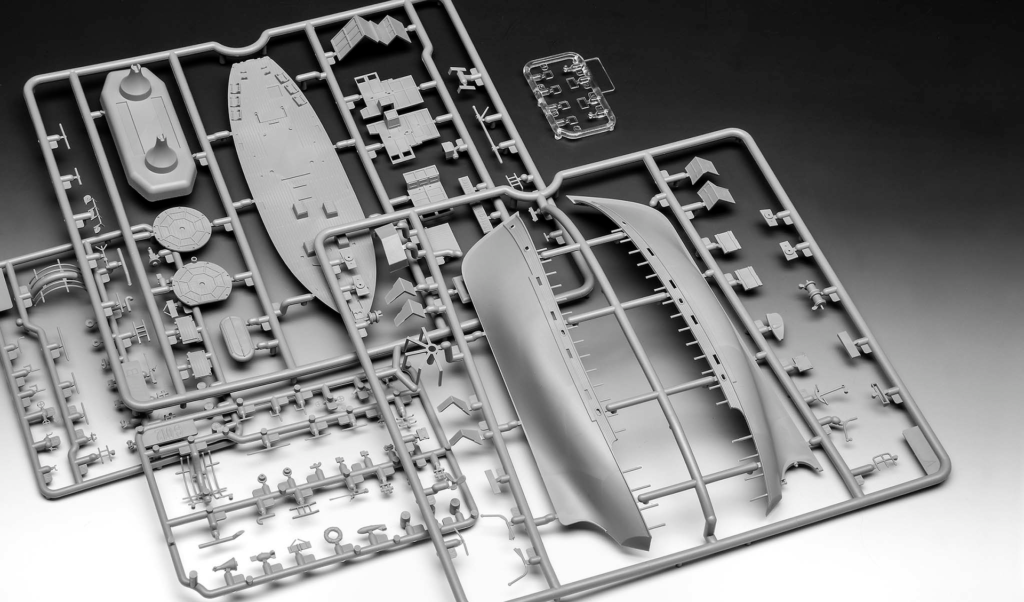
Particularly impressive is the detailed reproduction of the deck, which reflects the robust construction of the original KFKs. The included model stand allows for an appealing presentation of the finished model, while the included decals provide authentic markings.
This kit is ideal for advanced model builders aged 12 and up who want to combine their craftsmanship with historical interest. It offers a fascinating opportunity to engage with a significant but often overlooked aspect of maritime war history.
For anyone interested in this impressive model, the kit is available at https://revell.de/shop/product/052429090-kfk-kriegsfischkutter.

